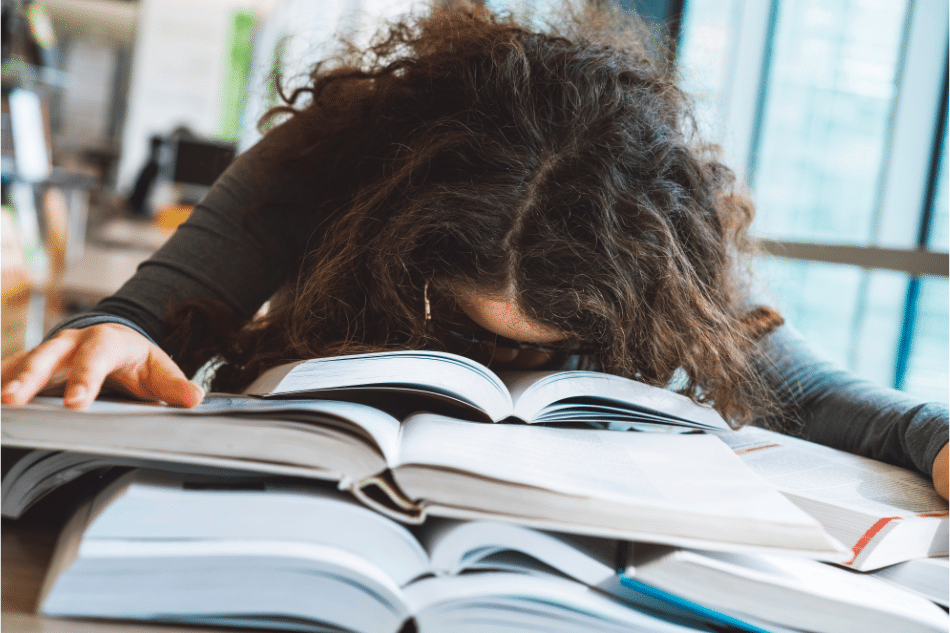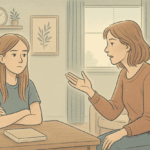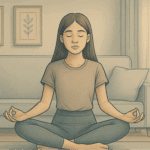Vyvanse for ADHD in Teenagers: How It Works and Side Effects

ADHD (attention deficit hyperactivity disorder) can make a teen feel frustrated, anxious, and out of step with the world around them. Negative thoughts can stick like Velcro, and the solution to their problems may feel out of reach.
Recent studies show us that around 8% of the world’s children and adolescents live with ADHD.¹ And this number only includes officially diagnosed children. Many other children and teens live with symptoms such as distraction, impulse control, and focus issues – and may be misunderstood as “lazy” or “inappropriate.”
When ADHD is diagnosed, treatment often involves a combination of therapy and stimulants, which is where Vyvanse may form part of the picture.
At Mission Prep, we’re here to help teens and parents not just manage ADHD symptoms, but understand which treatment options make the most sense. If Vyvanse ends up being part of your teen’s care plan, we want to make sure you feel informed and confident before anything begins.
This article can also shed some light on Vyvanse for ADHD in teenagers, guiding you through:
- What Vyvanse is and how it works in the teen brain
- The benefits and side effects of Vyvanse for ADHD
- How Vyvanse helps teens with impulse control
- Typical Vyvanse dosages for ADHD in teens
- How to safely stop Vyvanse
- Where to get professional Vyvanse and ADHD help for your teen

What Is Vyvanse? How Teen Treatment for ADHD with Vyvanse Works
Vyvanse is a stimulant medication that’s been used to treat ADHD in children and teens since 2007.² It’s approved for children as young as six, and today, there are also a few generic versions available that offer the same active ingredients.³
Like Adderall, Vyvanse is amphetamine-based. This means it works by helping key areas of the brain communicate more effectively, especially those responsible for focus, attention, and impulse control. However, even though they’re in the same category of medication, Vyvanse and Adderall don’t work exactly the same way.
Vyvanse is what’s called a “delayed-release” stimulant. Once it’s in the body, it activates more gradually, which helps it last longer – about 12 hours, compared to Adderall XR’s 10-hour window. This slower release can mean a smoother experience for some teens, especially if they’re sensitive to sharp spikes or crashes of energy.
On a chemical level, Vyvanse increases the levels of two important messengers in the brain: dopamine and norepinephrine. Dopamine helps regulate motivation and the brain’s reward system. On the other hand, norepinephrine, which acts more like a stimulant, plays a big role in attention and alertness.
The changes Vyvanse creates in the brain can lead to improvements in thinking clearly, staying focused, and managing emotions. It’s not a “magic fix,” but for many teens with ADHD, Vyvanse can be an important part of helping thoughts feel less tangled and daily life become a little more manageable.
Benefits of Teen Treatment for ADHD With Vyvanse
Managing ADHD in teens with Vyvanse is a very specific treatment approach. There are several ADHD stimulants on the market approved for ADHD treatment, including Ritalin, Concerta, and Adderall, but you’ll find that teens can respond differently to each. While each medication option has its benefits, let’s specifically look at why Vyvanse can be a good fit for many teens.
Vyvanse for Teen Concentration and Focus
When focus is hard to hold onto, even simple tasks can feel exhausting. For this reason, mental health providers often prescribe Vyvanse for teen concentration and focus. Vyvanse works by supporting the brain chemicals that play a role in attention and motivation – making it easier to settle into a task without drifting off every few minutes.
After starting treatment with Vyvanse, teens often say things feel a little more manageable. For instance, they’re able to stick with assignments longer, follow through more consistently, and keep their day from unraveling so easily. Some notice that school feels less overwhelming. Others just feel a bit more in control of their time. Taking Vyvanse for teen concentration and focus doesn’t make responsibilities disappear, but it can clear some of the noise that makes them harder to tackle.
How Vyvanse Helps Teens With Impulse Control
Restlessness and acting on impulse are often part of daily life for a teen with ADHD. They may find themselves blurting things out, interrupting conversations, or bouncing from one thing to the next without noticing they’re doing it. Vyvanse can help ease some of this reactivity.
When Vyvanse is a good fit, teens may find it easier to slow down. They might find it easier to sit through class, think before speaking, or stay with one activity without needing to constantly move or switch gears. This increased sense of calm can also make it easier to interact with others, especially in situations that usually feel frustrating or overwhelming.
Due to Vyvanse’s effects, some teens say they feel more in control of what they say and do, like there’s a little more space between feeling something and reacting to it. This shift can make a big difference when it comes to building routines and managing daily life with more predictability.
Vyvanse for Treating ADHD in Teens With Anxiety
Research shows that about one in three children and adolescents diagnosed with ADHD also struggle with anxiety.⁴ When both anxiety and ADHD are at play, treatment decisions often need to be adjusted based on how the teen responds over time.
Studies examining stimulant treatment in children found that Vyvanse is linked to a reduced risk of anxiety in some patients.⁵ This suggests that, for certain teens, treating ADHD symptoms may actually ease some underlying anxiety as well.
While this may be true, not everyone’s experience is the same. Vyvanse is a stimulant, and this means it can sometimes mimic or worsen symptoms of anxiety. For example, around 5% to 6% of adults who take Vyvanse have reported feeling more anxious.⁶
If symptoms of anxiety increase after starting Vyvanse, it might be a case of the medication not being a good fit.⁷ If you notice your teen becoming more anxious while taking Vyvanse, it’s best to chat directly with their treatment team so that adjustments can be made.
Vyvanse for Improving Academic Performance in Teens
Mental health professionals often prescribe Vyvanse for improving academic performance in teens because Vyvanse works to improve impulsivity and hyperactivity. This can bring an increased sense of calm and more intentional focus, which can boost academic performance.
Vyvanse Side Effects in Adolescents
Common Vyvanse side effects in adolescents include:
Dry mouth- Feeling jittery
- Dizziness
- Irritability
- Nausea
- Constipation or diarrhea
- Stomachache
In rare cases, Vyvanse can bring on mania or psychosis (especially where bipolar disorder is already present). This should be discussed with your mental health professional before starting any medication. The information below discusses some of the more common Vyvanse side effects in adolescents to be aware of.
Vyvanse and Weight Loss in Teenagers
Vyvanse and weight loss in teenagers is not uncommon. Weight loss sometimes happens when teens start Vyvanse because they experience a drop in appetite. For instance, around 34% of people taking Vyvanse report that they don’t feel as hungry.⁸ This reduced sense of hunger can make it harder to eat regular meals, especially in the first few weeks.
This is one reason providers often talk about nutrition early on. A solid daily routine that includes full meals can make a difference. Even when appetite is low, teens still need the fuel to focus, grow, and stay steady through the day.
Vyvanse and appetite suppression in teens isn’t all that surprising. Vyvanse is also approved for treating binge eating disorder in adults, so appetite changes make sense in this context.⁹ While children and teens are more likely to experience a loss of appetite than adults while taking Vyvanse, it doesn’t tend to be extreme. Most families are able to manage appetite loss with a little planning.
It helps to pay attention to when a teen feels more able to eat. For some, breakfast is the best window. Others may find a bigger evening meal works better. The important thing is to notice patterns and keep checking in. Small adjustments can help keep energy and nutrition in a healthy place while the medication is doing its part.
Vyvanse and Sleep Issues in Teens
Hearing of Vyvanse and sleep issues in teens is not uncommon. Research shows that insomnia and vivid dreams, including nightmares, can show up as side effects. These problems are reported more often in adults, but they can also happen in younger people.¹⁰
Vyvanse is a stimulant, so it increases activity in the central nervous system. If a teen takes it too late in the day, it may be harder to fall asleep at night. This is why many doctors recommend taking it early in the morning to give the body time to wind down.
Not all sleep problems are caused by medication. Sometimes something else might be going on. But if a teen who normally sleeps well starts staying up for hours or wakes up feeling restless or anxious, it’s worth paying attention.
Any changes in sleep should be shared with the treatment team. If the medication is causing disruption, your provider might adjust the timing, prescribe a sleep aid, or explore another approach to ADHD treatment.
These are all signs the treatment may be helping.
Risks of Vyvanse Use in Teenagers
While Vyvanse can be helpful for many teens with ADHD, it does come with potential risks – especially when it’s not closely monitored. For instance, Vyvanse can increase heart rate and blood pressure, and, as discussed, in some teens, it may lead to sleep problems, appetite loss, or mood changes.
There’s also the risk of dependency. Vyvanse affects dopamine levels, which play a role in the brain’s reward system. If it’s taken in high doses or without supervision, there’s a chance a teen could start to rely on it or misuse it.
Some teens report emotional effects like irritability, anxiety, or feeling “off” as the medication wears off. And for teens with underlying mental health conditions, Vyvanse can sometimes worsen symptoms.
In rare cases, stimulant medications have been linked to more serious cardiovascular events, especially in those with a heart condition. Your provider can discuss any of these risks with you and your teen, as well as monitor their response carefully.

Vyvanse Dosage for Teens
Vyvanse is usually taken once a day, and most teens start with 30 milligrams in the morning.
Some teens need a little more support, especially as the demands of the day change, so they might be prescribed a higher dosage. The highest daily Vyvanse dosage for teens is 70 milligrams. This is usually the upper limit, though not every teen needs this much.
Doctors watch closely during the early weeks of treatment to see how the body responds. If symptoms are still getting in the way, the dose may be adjusted. Even though there’s a standard Vyvanse dosage range, the right amount looks different for everyone. The best dose is the one that helps without creating more side effects.
Stopping Vyvanse Safely for Teens
The decision to stop treatment with Vyvanse might happen if the medication isn’t working well or if side effects start to cause problems. However, if your teen needs to come off Vyvanse, it should always be done with care.
Stopping all at once can lead to withdrawal symptoms. Some teens feel tired, irritable, or have trouble focusing again if they stop too quickly. Tapering the dose step by step gives the body time to adjust. At Mission Prep, we help families move through this process safely, with close support from the treatment team.
It can also help to understand Vyvanse withdrawal symptoms in adolescents and the signs to look out for.
Vyvanse Withdrawal Symptoms in Adolescents
Vyvanse withdrawal symptoms in adolescents usually show up about a day and a half after the last dose – or even sooner. What teens feel can vary, but some of the more common reactions are:
Feeling worn out- Mood swings or low mood
- Trouble focusing or thinking clearly
- A strong desire to take more medication
- Aches or tension in the body
- Less drive to do things
- Jittery or anxious feelings
These symptoms are more likely if the Vyvanse dose was high or it was used over a long period. Yet, even teens who take it exactly as prescribed sometimes feel a drop when it wears off at the end of the day.
To come off Vyvanse safely, the dose needs to be reduced slowly. This gives the brain time to settle. Having a regular sleep routine, meals that provide steady energy, and a calm environment can help.
Reach Out to Mission Prep
If you’re exploring the option of using Vyvanse for ADHD in teenagers, Mission Prep is here to help. Our team regularly works with families to find effective ways of managing ADHD in teens with Vyvanse and create treatment plans that truly fit. Contact Mission Prep today to learn more about how we support teens and parents at every step of the ADHD treatment journey.

References
- Ayano, G., Demelash, S., Gizachew, Y., Tsegay, L., & Alati, R. (2023). The global prevalence of attention deficit hyperactivity disorder in children and adolescents: An umbrella review of meta-analyses. Journal of Affective Disorders, 339, 860–866. https://www.sciencedirect.com/science/article/pii/S0165032723009230?via%3Dihub
- Department of Health and Human Services, Cheng, C., Iorio, N., Kim, I., & Shire. (2020). Pediatric postmarketing pharmacovigilance and drug utilization review. https://www.fda.gov/files/advisory%20committees/published/2-Vyvanse%20Safety%20and%20Utilization%20Review_508ed.pdf
- Center for Drug Evaluation and Research. (2023, August 28). FDA approves multiple generics of ADHD and BED treatment. U.S. Food and Drug Administration. https://www.fda.gov/drugs/news-events-human-drugs/fda-approves-multiple-generics-adhd-and-bed-treatment
- Sadek, J. (2018). ADHD and anxiety. In Springer eBooks (pp. 23–31). https://link.springer.com/chapter/10.1007/978-3-319-45635-5_3
- Coughlin, C. G., Cohen, S. C., Mulqueen, J. M., Ferracioli-Oda, E., Stuckelman, Z. D., & Bloch, M. H. (2015). Meta-analysis: Reduced risk of anxiety with psychostimulant treatment in children with attention-deficit/hyperactivity disorder. Journal of Child and Adolescent Psychopharmacology, 25(8), 611–617. https://www.liebertpub.com/doi/10.1089/cap.2015.0075
- Bichuetti, H. M. (MRPharmS). (2022, October 17). Vyvanse (lisdexamfetamine dimesylate). Medical News Today. https://www.medicalnewstoday.com/articles/vyvanse#side-effects
- Michelini, G., Eley, T. C., Gregory, A. M., & McAdams, T. A. (2014). Aetiological overlap between anxiety and attention deficit hyperactivity symptom dimensions in adolescence. Journal of Child Psychology and Psychiatry, 56(4), 423–431. https://acamh.onlinelibrary.wiley.com/doi/10.1111/jcpp.12318
- Takeda Pharmaceuticals. (2023). Highlights of prescribing information. https://www.shirecontent.com/PI/PDFs/Vyvanse_USA_ENG.pdf
- Fornaro, M., Solmi, M., Perna, G., De Berardis, D., Veronese, N., Orsolini, L., Ganança, L., & Stubbs, B. (2016). Lisdexamfetamine in the treatment of moderate-to-severe binge eating disorder in adults: Systematic review and exploratory meta-analysis of publicly available placebo-controlled, randomized clinical trials. Neuropsychiatric Disease and Treatment, 12, 1827–1836. https://www.dovepress.com/lisdexamfetamine-in-the-treatment-of-moderate-to-severe-binge-eating-d-peer-reviewed-fulltext-article-NDT
- Takeda Pharmaceuticals. (2023b). Highlights of prescribing information [Press release]. https://www.accessdata.fda.gov/drugsatfda_docs/label/2023/021977s050,208510s007lbl.pdf



















